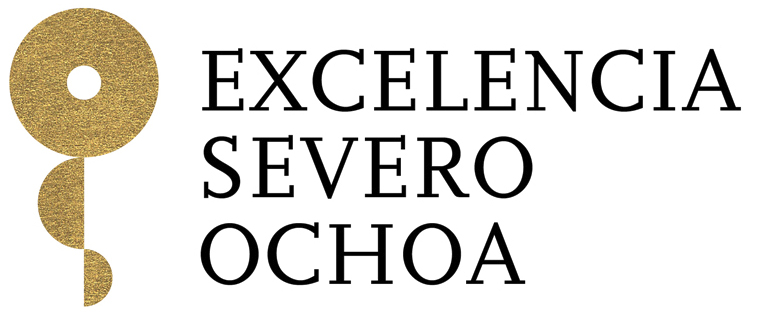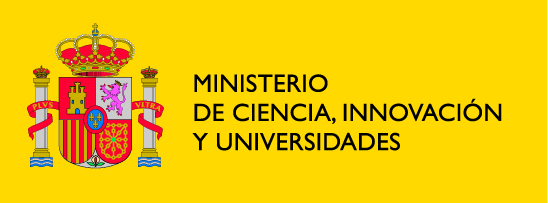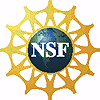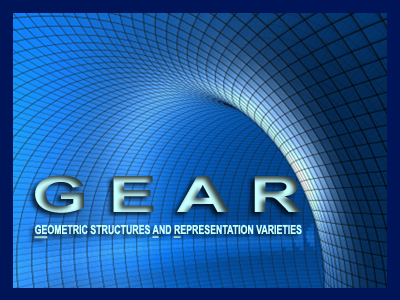Moduli Seminar
-
27 Nov 2018, at 11:30 in Orange Room
Daniel Hernández Ruipérez (Salamanca):
Supercurves, supersymmetric curves and their moduli spaces - Expand Abstract
Lecture slides
Abstract. Supergeometry is the natural arena for supersymmetric theories in Physics. It has been suggested that a supermoduli for super Riemann surfaces (or SUSY curves) should be the framework for the formulation of the amplitude integral in superstring theory. We will discuss some local and global constructions of such a moduli space, considering also other supermoduli spaces, like non necesarilly supersymmeric supercurves, considering the presence of Neveu-Swchartz or Ramond-Ramond punctures as well. The topic has attracted new interest due to work of Donagi and Witten on the non-projecteness of many supermoduli spaces and the effect that this has on the integration over the supermoduli.
-
8 Nov 2018, at 15:30 in Orange Room
Claude LeBrun (Stony Brook University):
Mass, Scalar Curvature, and Kähler Geometry III - Expand Abstract
Lecture slides
Abstract. This is the third talk in a 3-lecture course.
Given a complete Riemannian manifold that looks enough like Euclidean space at infinity, physicists have defined a quantity called the “mass” which measures the asymptotic deviation of the geometry from the Euclidean model. In these lecture, I will explain a simple formula, discovered in joint work with Hajo Hein, for the mass of any asymptotically locally Euclidean (ALE) Kähler manifold. For ALE scalar-flat Kähler manifolds, the mass turns out to be a topological invariant, depending only on the underlying smooth manifold, the first Chern class of the complex structure, and the Kähler class of the metric. When the metric is actually AE (asymptotically Euclidean), our formula not only implies a positive mass theorem for Kähler metrics, but also yields a Penrose-type inequality for the mass.
The lectures will be self-contained, and will include an extensive discussion of explicit examples in order to breathe life into the discussion. The lectures will also include a careful discussion of some recent work which offers technical improvements on the earlier versions of the results by exploiting symplectic aspects of the story that had previously gone unnoticed.
-
5 Nov 2018, at 15:30 in Orange Room
Claude LeBrun (Stony Brook University):
Mass, Scalar Curvature, and Kähler Geometry II - Expand Abstract
Lecture slides
Abstract. This is the second talk in a 3-lecture course.
Given a complete Riemannian manifold that looks enough like Euclidean space at infinity, physicists have defined a quantity called the “mass” which measures the asymptotic deviation of the geometry from the Euclidean model. In these lecture, I will explain a simple formula, discovered in joint work with Hajo Hein, for the mass of any asymptotically locally Euclidean (ALE) Kähler manifold. For ALE scalar-flat Kähler manifolds, the mass turns out to be a topological invariant, depending only on the underlying smooth manifold, the first Chern class of the complex structure, and the Kähler class of the metric. When the metric is actually AE (asymptotically Euclidean), our formula not only implies a positive mass theorem for Kähler metrics, but also yields a Penrose-type inequality for the mass.
The lectures will be self-contained, and will include an extensive discussion of explicit examples in order to breathe life into the discussion. The lectures will also include a careful discussion of some recent work which offers technical improvements on the earlier versions of the results by exploiting symplectic aspects of the story that had previously gone unnoticed.
-
29 Oct 2018, at 15:30 in Orange Room
Claude LeBrun (Stony Brook University):
Mass, Scalar Curvature, and Kähler Geometry I - Expand Abstract
Lecture slides
Abstract. This is the first talk in a 3-lecture course.
Given a complete Riemannian manifold that looks enough like Euclidean space at infinity, physicists have defined a quantity called the “mass” which measures the asymptotic deviation of the geometry from the Euclidean model. In these lecture, I will explain a simple formula, discovered in joint work with Hajo Hein, for the mass of any asymptotically locally Euclidean (ALE) Kähler manifold. For ALE scalar-flat Kähler manifolds, the mass turns out to be a topological invariant, depending only on the underlying smooth manifold, the first Chern class of the complex structure, and the Kähler class of the metric. When the metric is actually AE (asymptotically Euclidean), our formula not only implies a positive mass theorem for Kähler metrics, but also yields a Penrose-type inequality for the mass.
The lectures will be self-contained, and will include an extensive discussion of explicit examples in order to breathe life into the discussion. The lectures will also include a careful discussion of some recent work which offers technical improvements on the earlier versions of the results by exploiting symplectic aspects of the story that had previously gone unnoticed.
-
3 Oct 2018, at 12:30 in Orange Room
Frances Kirwan (Oxford):
Special Colloquium on Moduli spaces of unstable curves - Expand Abstract
Abstract. Moduli spaces arise naturally in classification problems in geometry. The study of the moduli spaces of nonsingular complex projective curves (or equivalently of compact Riemann surfaces) goes back to Riemann himself in the nineteenth century. The construction of the moduli spaces of stable curves of fixed genus is one of the classical applications of Mumford’s geometric invariant theory (GIT), developed in the 1960s. Here a projective curve is stable if it has only nodes as singularities and its automorphism group is finite. The aim of this talk is to describe these moduli spaces and outline their GIT construction, and then explain how recent methods from non-reductive GIT can help us to classify the singularities of unstable curves in such a way that we can construct moduli spaces of unstable curves (of fixed singularity type).
-
19 Sep 2018, at 12:00 in Orange Room
Kyoung-Seog Lee (IBS Center for Geometry and Physics):
Semiorthogonal decompositions of derived categories of symmetric products of curves - Expand Abstract
Abstract. Derived categories of coherent sheaves on algebraic varieties are important and attractive invariants containing lots of information about the varieties. In particular, it seems that derived categories of moduli spaces of vector bundles on curves have interesting structures. I will discuss Narasimhan's conjecture about these structures and related problems. Then I will discuss semiorthogonal decompositions of derived categories of symmetric products of curves. This talk is based on a joint work with Indranil Biswas and Tomas Gomez.





